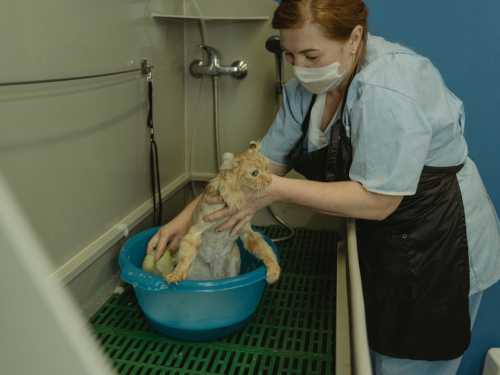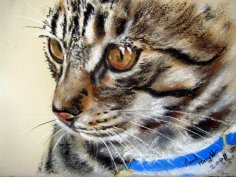
“Festina Lente”—”Make haste slowly”—was the inscription on the emblem of the famous Florentine politician, banker, and merchant Cosimo de' Medici, who reinforced this wise saying with a drawing of a turtle with a sail on its back. However, real turtles don't need a sail. Even without a sail, they have successfully navigated through time and space—slowly and surely—for a good 200 million years.
Turtles are the only surviving representatives of the anapsids, the most ancient group of reptiles. Although the first fossil turtle finds date back to the Upper Triassic, their appearance is so recognizable that this group likely formed even earlier, in the Permian period of the Paleozoic. This means that turtle eyes witnessed the Great Permian Extinction, the demise of the dinosaurs, the rise of mammals, and the rise of human civilization.
G. Melville:
“They were unlike any earthly creature… Heavy as safes, with a colossal shell dented like a battle shield… These mystical creatures seemed to have crawled out from beneath the foundations of the world… Their age staggers the imagination. Consider their impenetrable living armor. What other creature possesses such strength to withstand the onslaught of time?”
Tortoises are also slow to live, so if they could talk, they would be the world's best historians. Somewhere around the 1960s, the media reported that a legendary tortoise, a gift to the famous explorer James Cook, had died in a zoo. And the Galapagos Islands may still harbor specimens of the same kind of tortoises that Charles Darwin rode on. A lifespan of 100-150 years is quite achievable for land tortoises.
C. Darwin, “The Naturalist's Voyage Around the World on the Ship “Beagle”:
“I always had the pleasure of overtaking one of these huge monsters as it sauntered along the road: the moment I passed, it would draw in its head and legs, and, emitting a low whistling sound, fall heavily, as if struck dead. Often I would climb onto their backs, and after a few light blows to the back of their shield, they would rise and crawl away, but it was already difficult for me to maintain my balance.”
Joke:
The turtle to her suitor:
– I can't today… I've started getting eyelids…
From the song by turtle VIA GRA:
If you're somewhere a little over three hundred…
This order of reptiles achieved evolutionary success and longevity in a rather simple way – by simply clad themselves in armor from head to toe.
True, to acquire a shell, these reptiles severely “mutilated” their skeletons. The spine curved, the ribs spread outward, becoming wide and flat, and horny plates grew firmly onto this framework. Scientists call the upper part of the turtle's “house” the carapace, and the lower part of the plates, which protects the abdomen, the plastron.
The skeletal “mutilation” didn't end there. Something had to be done to the clavicles and shoulder blades to allow any movement. As a result, the entire shoulder girdle was displaced within the ribcage. And since the ribcage couldn't expand, breathing had to be accomplished solely with the lateral muscles, acting like bellows.
It still remained to decide how to hide the head.
K. Vonnegut “Cat's Cradle”:
“The three of us were sitting in the car, watching Angela crank the crank until the battery died. And then Dad spoke up. Do you know what he said? 'I wonder about turtles.' Angela asked him, 'What do you wonder about turtles?' And he said, 'When they pull their heads in, do their spines shorten or arch?' … After talking about turtles, Dad became so fascinated with them that he stopped working on the atomic bomb.”
In fact, it's not the spine that bends, but the neck itself. However, this happens differently in different turtles. Some turtles are called side-necked turtles, which bend their necks horizontally, while others are called hidden-necked turtles, which bend their necks vertically.
Joke:
The tortoise, stung on the nose by a wasp, says:
– Damn it, I'll have to spend the night on the street again!
Incidentally, not all turtles can completely hide their heads. In the big-headed turtle, it doesn't fit under its shell at all (nor do its large, clawed feet), so all protruding parts of its body are thoughtfully covered with strong scutes.
The snapping turtle's head also doesn't fit completely under its shell. But, as the song goes, “Don't you dare touch it.” A non-retractable head is characterized by an excessive bite, and its owner is characterized by weak nerves and increased aggression. This American freshwater turtle is a true predator, capable of feasting not only on fish, but also on goslings, snakes, and muskrats. And with its strong beak, it can easily snip off a finger from anyone who disturbs it.
K. Chukovsky:
…Suddenly a stone jumped onto my feet
And he grabbed them by the legs.
And they cried out in fear:
– This is – WHAT!
This is RE!
This is GAHA!
This is CHECHERE!
DAD!
“PAPAHA!”
When some turtles decided to colonize the sea, many of their “ancestors'” advancements proved unnecessary in the new environment. As a result, sea turtles' shells became significantly lighter, and they stopped retracting their heads into them. However, their mobility increased. Their paws evolved into flippers, which allow sea turtles to literally “fly” through the water (i.e., move their paws up and down, while freshwater turtles simply paddle theirs).
Toast:
A turtle is swimming in the sea, and on its back is a snake. It's swimming and thinking, “Oh, I wish I could throw it off, but I can't—it'll bite me.”
The snake sits on the turtle’s back and thinks: “I’d like to bite it, but I can’t – it’ll throw me off.”
So let's drink to female friendship – the strongest thing in the world!
There are also soft-shell turtles—those completely lacking horny scutes. The entire bony frame bequeathed by their ancestors is covered with ordinary soft skin. In the leatherback turtle, the shell has been reduced and transformed into connected bony plates, completely disconnected from the skeleton.
Turtles combine their defensive capabilities with remarkable resilience. They can survive fasts for up to eighteen months, and even with their heads severed, they can remain active for over a week.
E. Hemingway:
“Most people are heartless towards turtles because a turtle's heart continues to beat long after the animal has been killed and cut into pieces.”
They're truly remarkable divers. Aquatic turtles surface for air only every 15-20 minutes. And when the pesky scientists prevented them from surfacing, they easily survived without oxygen for several hours. It turns out that many aquatic species have a secret method of respiration: their pharynx, covered with villi and papillae, is capable of absorbing oxygen directly from the water.
Unfortunately, the turtles' protective devices were designed for normal animals, not for intelligent, two-legged gourmets…





